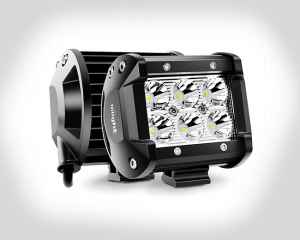Is it possible to connect LED/fog lights when you don’t have a proper relay? Is a diagram absolutely necessary, or not? Those are the questions that many drivers ask themselves when trying to handle the wiring on their own. I’ve got lots of experience in this and with dozens of successful wiring gigs behind my pack, I’m happy to be your guide.
Now, even if you search online and find a fog light wiring diagram without relay, it’ll probably still be pretty hard to make sense of it. That’s why I decided to write this post. Join me, and let’s see how we can pull this off. First, we’ll talk about the pros and cons of relays. Next, I’ll show you how to get things done with a regular switch. Let’s get to it!
Why is a Relay so Important? What does it do?
The first thing that we need to figure out is the purpose of a relay. In simple words, it’s got only one job: to control the electricity levels in a high-current circuit and prevent spikes. And, when you’re, say, trying to wire a set of fog lights, it’s imperative to get the right resistance, voltage, and current. There are, of course, alternatives to relays. We’ll talk about that in more detail soon. Right now, let’s quickly check out the advantages and disadvantages of a relay:
The Pros:
- Very efficient at controlling the electric flow/current
- Safe and reliable: prevents overheating of the individual components
- Prevents wires from melting by handling high-powered fog lights
- Ensures the lights are always bright
The Cons:
- Relays don’t have proper protection against wearing, tearing, and cracks
- Slow to respond – take forever to turn the fog/LED lights on and off
- Rather useless in low-current circuits
Where can you find a Proper Wiring Diagram?
It’s always easier to get everything right when you’ve got a diagram on a piece of paper or a screen to guide you. The best way to get it is to Google for it. Yes, it’s that simple. There are lots of free websites where you can find the right diagram (Pinterest, for example). Just don’t expect it to do the work for you. All the schematic is good for is some guidance, a way to make sure you’re doing everything right.
Getting Started

Make sure the supply has more voltage than the collective voltage of every single fog light in the chain. Next, get a resistor. Again, it’s imperative for the resistor to match your setup. This shouldn’t be hard: if you’re having difficulties, ask the staff member to help you out. Just provide the voltage and wattage levels of your power supply and lights.
Fog Light Wiring Guide
Obviously, for this to work, you’ll need a switch. Now, most switches come as part of a wiring harness. These are available both locally and online for $10-15. Switches are great at breaking and making electrical circuits, and that’s what makes them a strong alternative to relays. So, start by setting it in the “off” position. Then, use a soldering tool to “bond” one of the switch terminals to a resistor via a piece of wire.
Another wire should connect the 2nd switch terminal to the power supply’s positive terminal. Next, I want you to connect the fog lights (or, rather, their cathode) to the power supply. For that, use the third piece of wire. Make sure you did a good job with the soldering tool. Finishing up, place the anode and cathode according to the diagram, and that’s pretty much it. This is important: don’t use the stock wires, as they’re not heavy enough to handle the load.
Turn the switch on, and the lights should come up. A quick note: I would also recommend adding a fuse to the chain. This is equally true even if you do have a replay. The reason: it will protect the electronic components in your Jeep from burning up. A regular assortment kit will cost you 15-20 dollars – a great price for being safe on the road. Or, if you’re lucky, the wiring kit will already include a fuse.

Add Comment